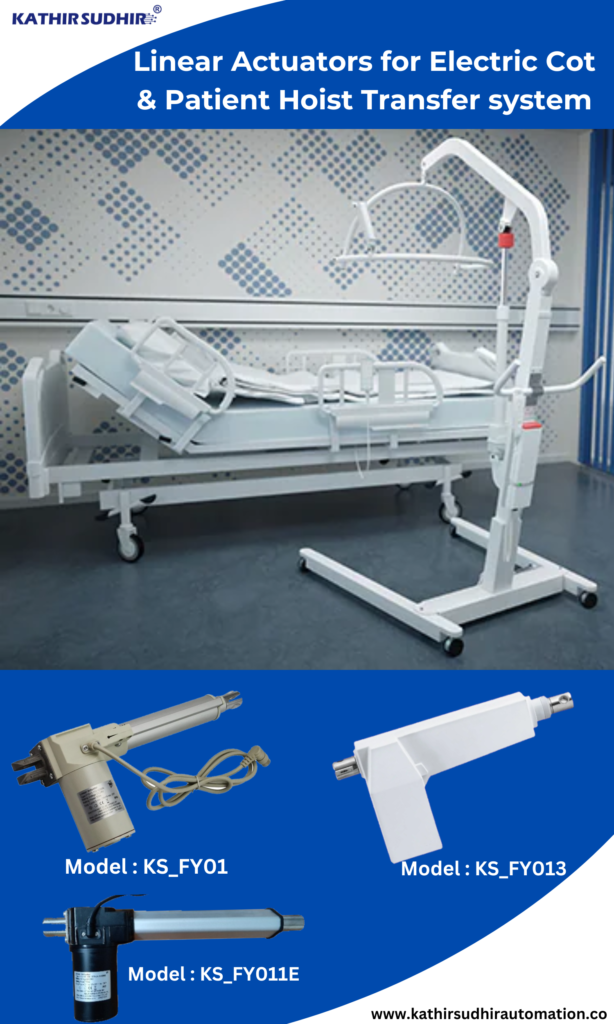Introduction: In the realm of healthcare, providing optimal care and ensuring patient comfort are top priorities. With advancements in technology, linear actuators have emerged as invaluable components in the design and functionality of electric cots and patient hoist transfer systems. These innovative devices offer numerous benefits, ranging from seamless adjustment capabilities to improved ergonomics. In this blog, we will explore the advantages of utilizing linear actuators in electric cots and patient hoist transfer systems, revolutionizing the healthcare industry.

- Seamless Adjustments for Personalized Comfort: Linear actuators play a pivotal role in electric cots by enabling effortless adjustment of various bed positions. Whether it’s raising the headrest, adjusting the leg support, or altering the overall bed height, these actuators provide smooth and precise movements. By offering personalized comfort to patients, these electric cots ensure optimal positioning for rest, recovery, and therapy. Caregivers and medical professionals also benefit from the ease of adjustment, allowing them to provide individualized care without straining their own bodies.
- Enhanced Mobility and Accessibility: Patient hoist transfer systems, aided by linear actuators, have revolutionized the way patients are moved within healthcare facilities. These actuators enable controlled and safe lifting, lowering, and transferring of patients between beds, wheelchairs, and other medical equipment. By automating the transfer process, linear actuators reduce the physical strain on caregivers and minimize the risk of patient injury. This not only enhances patient comfort but also ensures the safety and well-being of both patients and healthcare providers.
- Improved Ergonomics and Efficiency: Linear actuators contribute to improved ergonomics in both electric cots and patient hoist transfer systems. The ability to adjust bed positions or transfer patients with ease reduces the physical strain on caregivers, minimizing the risk of musculoskeletal injuries. This, in turn, enhances the overall efficiency of healthcare operations. With quick and precise movements enabled by linear actuators, caregivers can devote more time and energy to direct patient care, ensuring better outcomes and patient satisfaction.
- Intelligent Control Systems for Customized Care: Modern linear actuators often come equipped with intelligent control systems, allowing for customized care. These systems can incorporate features such as memory functions to recall preferred bed positions, vibration modes for therapeutic purposes, or even integration with patient monitoring systems. The flexibility and programmability of linear actuators enable healthcare professionals to tailor the patient experience according to individual needs and treatment plans.
- Integration and Future Possibilities: Linear actuators for electric cots and patient hoist transfer systems can be seamlessly integrated into existing healthcare infrastructures. They can also be combined with other technologies such as sensors, remote controls, and smart devices, opening up possibilities for remote monitoring, data collection, and analysis. The integration of linear actuators with emerging technologies paves the way for enhanced patient care and improved healthcare management.
Conclusion: Linear actuators have revolutionized the healthcare industry by transforming electric cots and patient hoist

